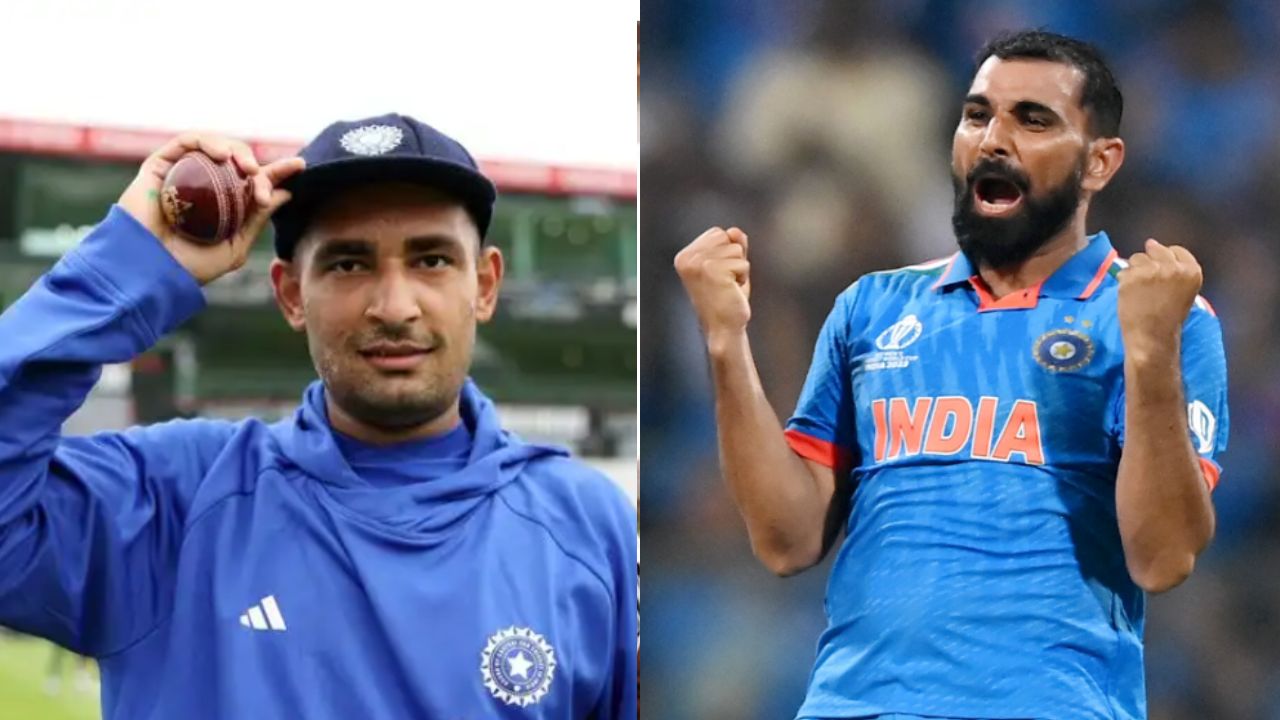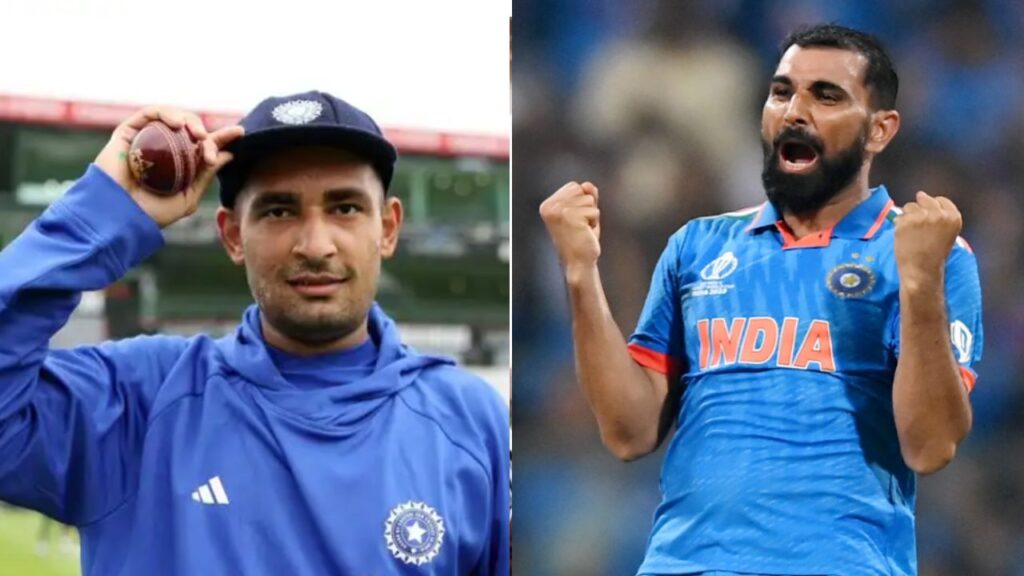
Kamboj Debuts at 125 kmph, Shami Dropped at 135: The Curious Case of Indian Selection Sparks Debate
The Indian cricket team is once again in the spotlight — but this time, not for a dazzling win or a record-breaking performance. Instead, it’s the selection conundrum that has fans, experts, and former players scratching their heads. The decision to hand a debut cap to rookie pacer Karan Kamboj, who bowls at a modest 125 kmph, while sidelining veteran Mohammed Shami, who regularly clocks 135+ kmph, has ignited a firestorm of criticism and questions.
Is the Indian team management leaning more on hunches than form or logic? Or is there a long-term plan that fans are failing to see?
The Debut That Turned Heads — Not for the Right Reasons
Karan Kamboj, a promising right-arm medium pacer from Haryana, was handed his maiden Test cap in the ongoing series against England. While the gesture signifies India’s commitment to nurturing fresh talent, the decision has raised serious eyebrows — not due to Kamboj’s ability, but because of the circumstances surrounding his inclusion.
In his debut match, Kamboj bowled with discipline but hovered between 122–127 kmph, rarely troubling seasoned batters with pace. In stark contrast, Mohammed Shami, one of India’s premier seamers with 229 Test wickets and a lethal outswinger, was left out of the playing XI, despite being fully fit and available.
Selection Baffles Experts and Fans Alike
The choice has prompted a flood of reactions from both fans and cricket analysts. While some welcomed the inclusion of a new face, others called the decision “illogical,” “unfair,” and “unstrategic.”
Former Indian pacer Venkatesh Prasad tweeted:
“What message are we sending when a bowler clocking 125 kmph is preferred over someone with experience, skill, and proven match-winning pedigree?”
Even Wasim Jaffer, known for his diplomatic takes, couldn’t hold back:
“Shami deserves better. If workload management is the reason, it needs more transparency.”
The Stats Speak for Themselves
- Mohammed Shami (Last 10 Tests): 39 wickets @ 21.2 average
- Karan Kamboj (Domestic 2023-24): 17 wickets @ 33.4 average in Ranji Trophy
- Average pace: Shami – 137-141 kmph | Kamboj – 124-127 kmph
The numbers clearly suggest that Shami, even at 33, is operating at a world-class level, while Kamboj is still finding his feet in top-level cricket.
What Could Be the Logic?
Speculation is rife that the team management might be experimenting with a “horses for courses” policy — picking bowlers based on pitch conditions. Another theory points towards workload management ahead of the upcoming ICC tournaments.
A source close to the team reportedly said:
“The pitch was slow, and the idea was to use someone who can maintain line and length rather than rely on pace.”
Still, critics argue: Why not give someone like Shardul Thakur or Mukesh Kumar the opportunity, who operate in the 130+ range with better control and batting depth?
Selection or Sentiment?
The decision has once again brought to light the inconsistencies in Indian selection policies. Over the last few years, fans have seen a mix of emotion-driven calls, sudden exclusions, and confusing player rotations. From Rahane’s repeated comebacks to Kuldeep Yadav’s unexplained omissions, the Indian bench management has often found itself answering tough questions.
Shami’s exclusion feels even more jarring when juxtaposed with a debutant who lacks pace, experience, or significant domestic dominance.
Fan Reactions: Outrage Meets Sarcasm
Cricket fans didn’t take the decision lightly. Social media exploded with reactions:
- “India’s bowling attack is now sponsored by UPS – Ultra-Predictable Speed.”
- “Shami bowling 135 is ‘rested’. Kamboj bowling 125 is ‘future-proof’?”
- “This isn’t strategy. This is sacrilege.”

Memes featuring comparisons between Shami’s fiery yorkers and Kamboj’s floaters flooded Twitter and Instagram.
What This Means Going Forward
While it’s early days for Kamboj, his debut — overshadowed by the Shami snub — might prove a double-edged sword. The pressure on the youngster is enormous, and unless he delivers something extraordinary, this move could reflect poorly on the selectors and coaching staff.
For Mohammed Shami, this could be another reminder of the brutal uncertainty in modern-day cricket, where reputation sometimes bows to experimentation.
Is Talent Being Ignored for Theatrics?
India boasts one of the richest talent pools in world cricket. But decisions like this raise concerns about how that talent is being used. Kamboj may well become a great asset in time — but dropping someone like Shami, especially when he’s in form and fitness, feels less like strategic planning and more like selective oversight.
Until transparency improves and selection is driven more by merit than mystery, such curious cases will continue to baffle fans and hurt the team’s balance.



